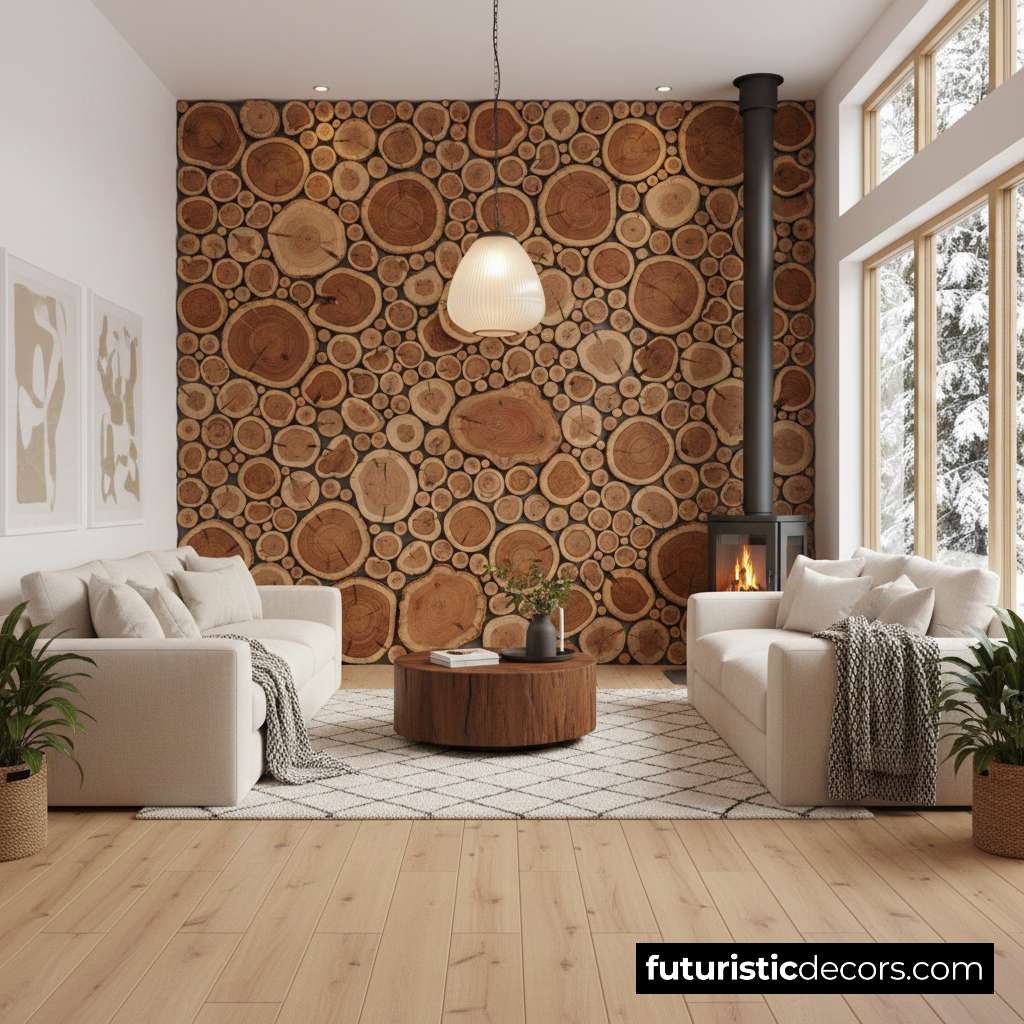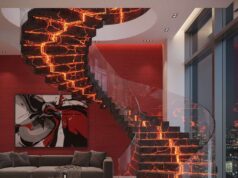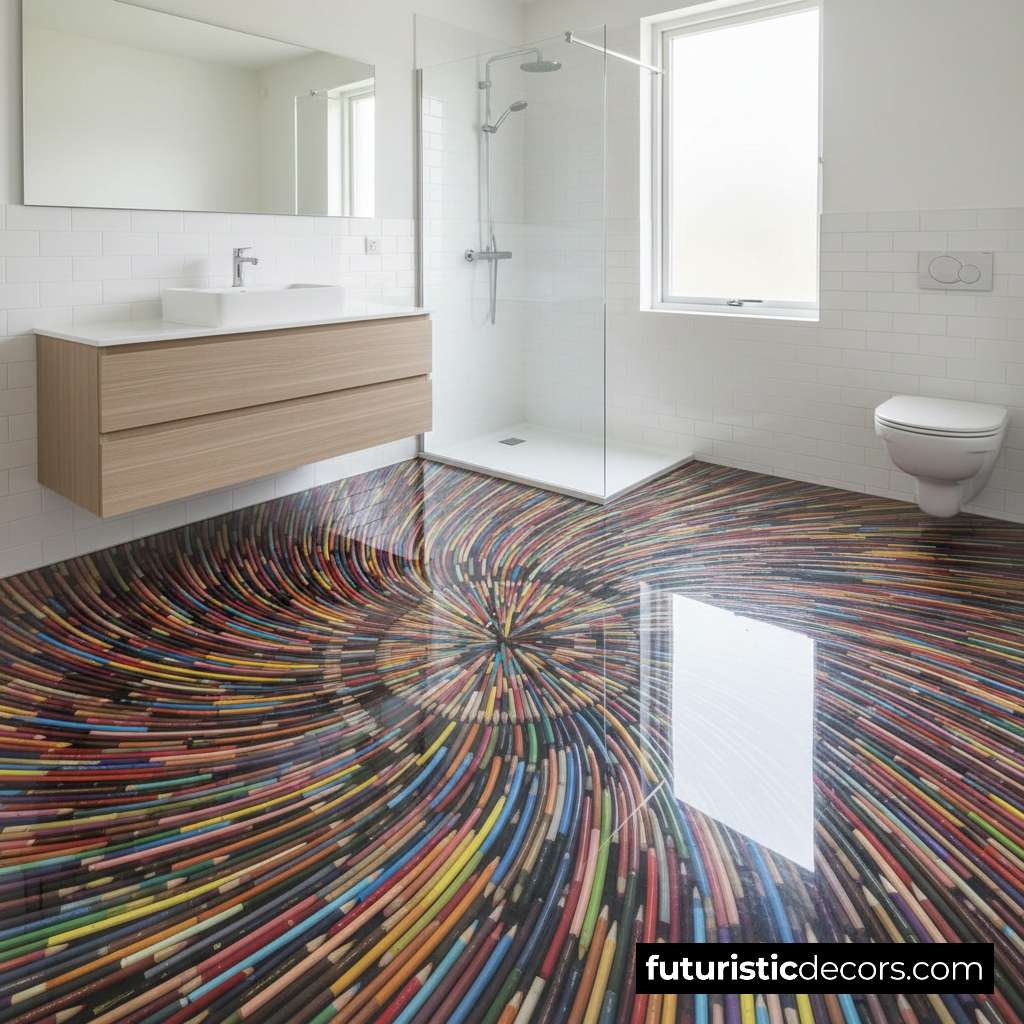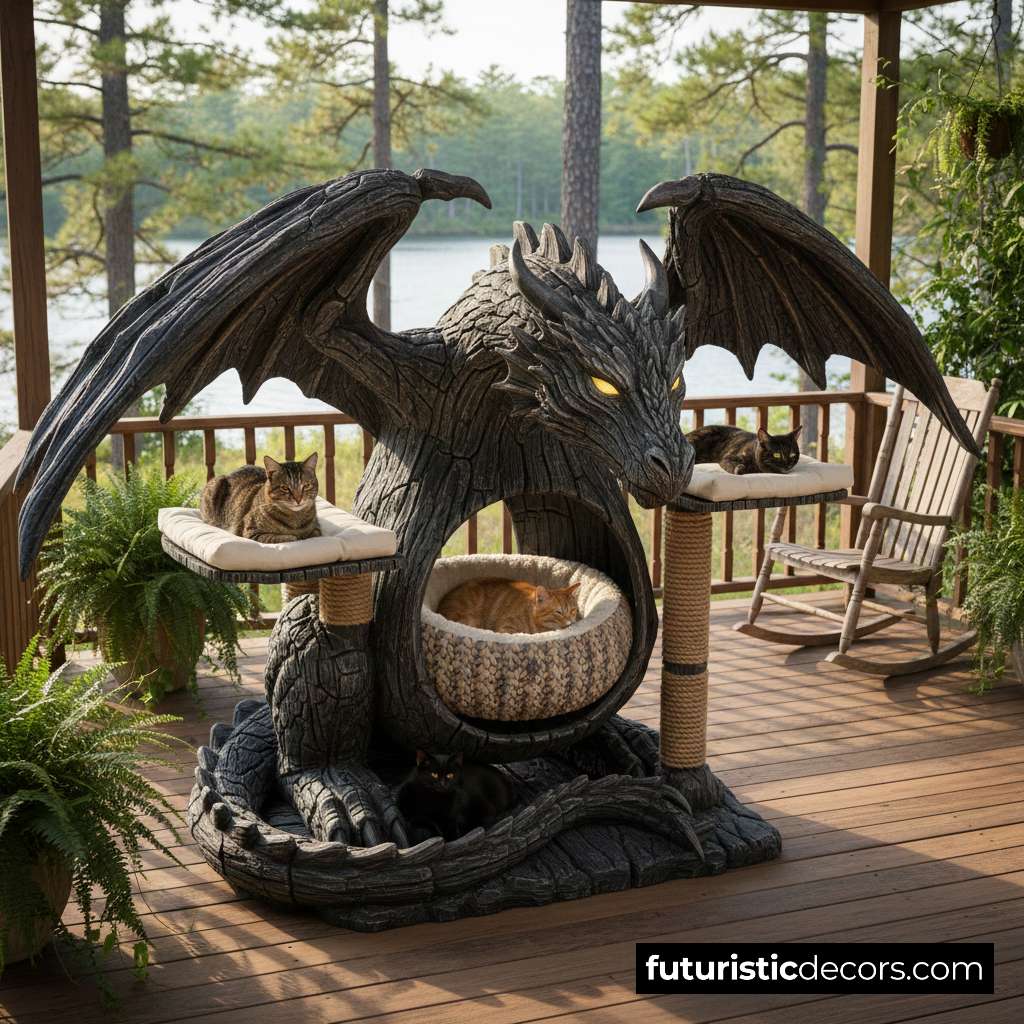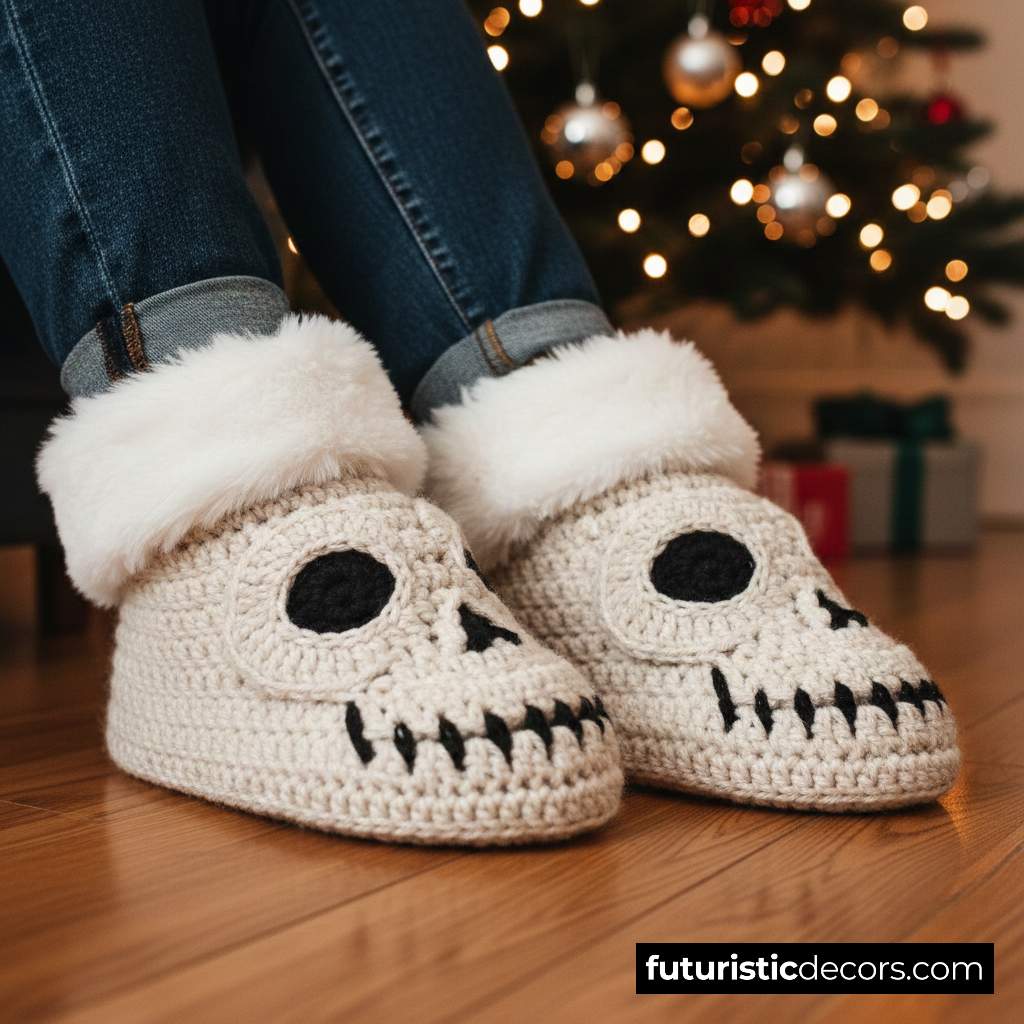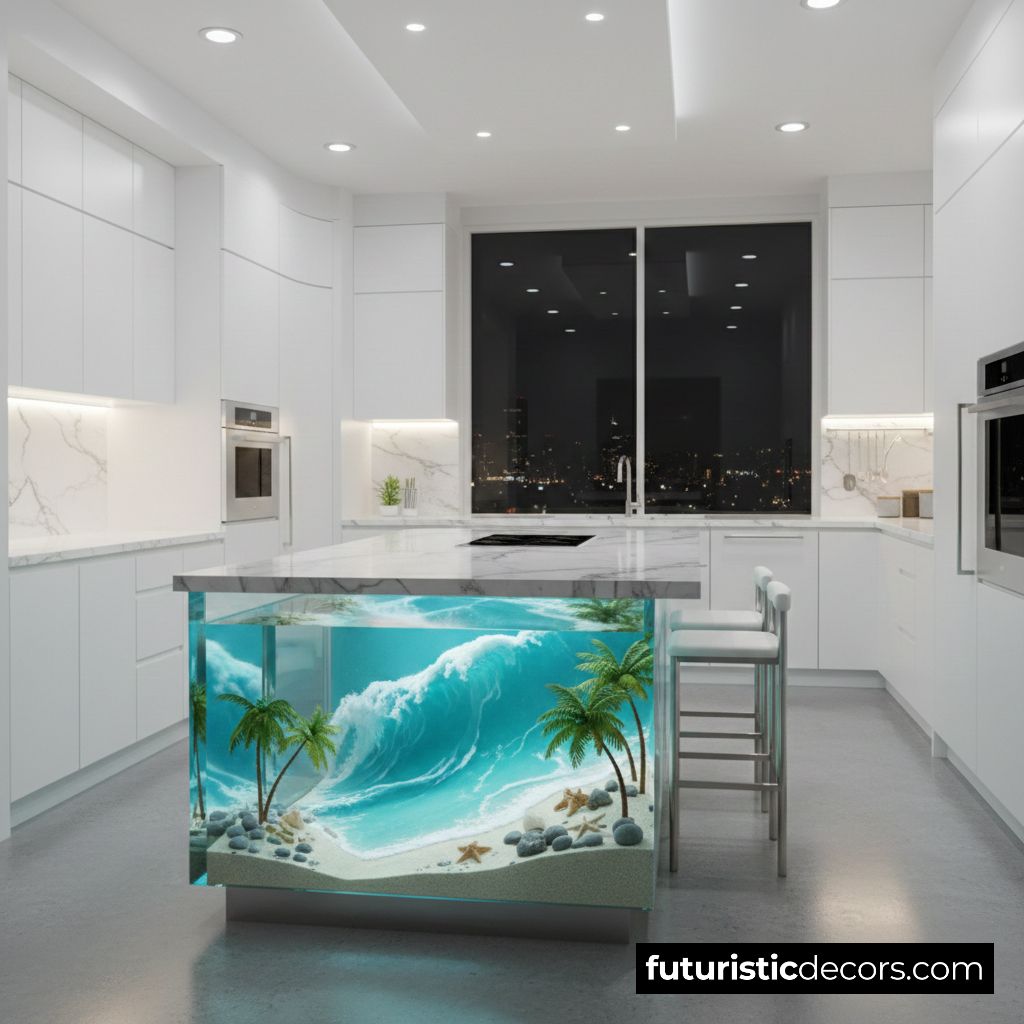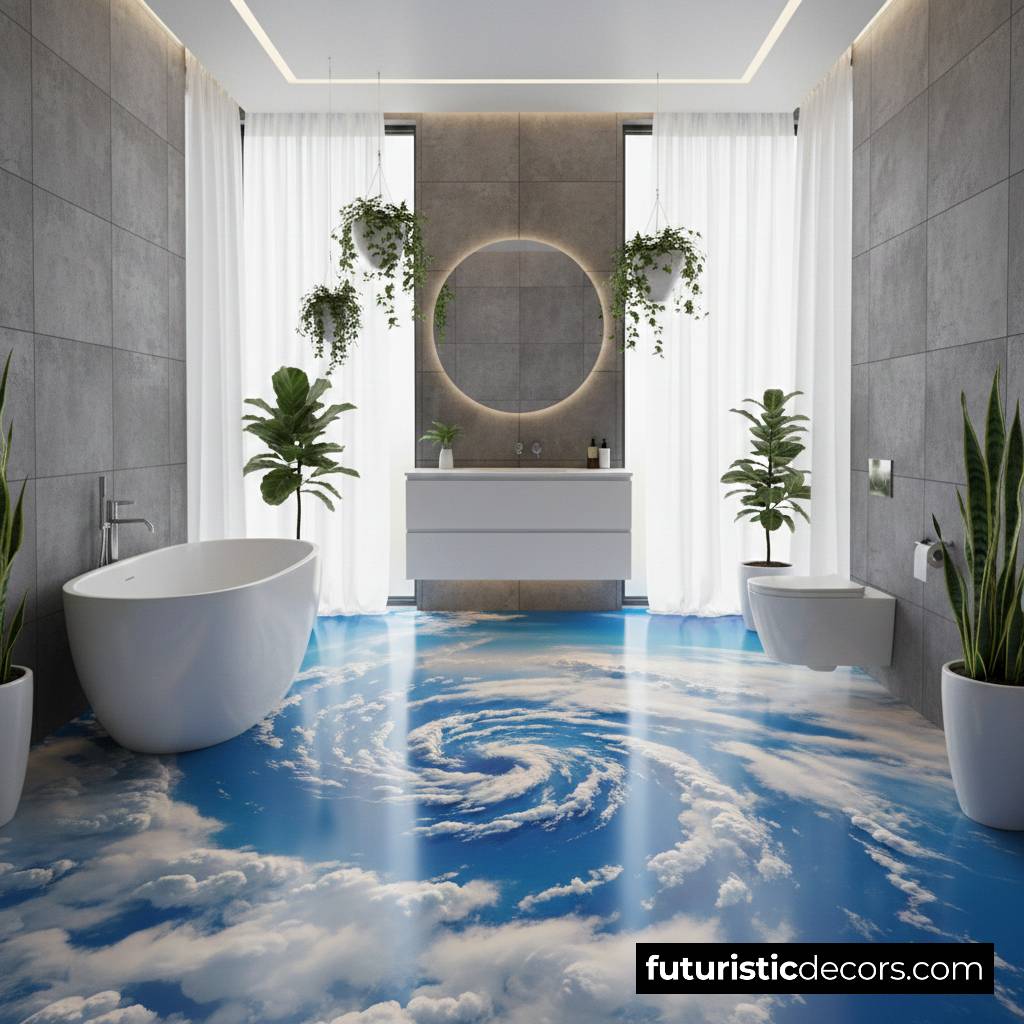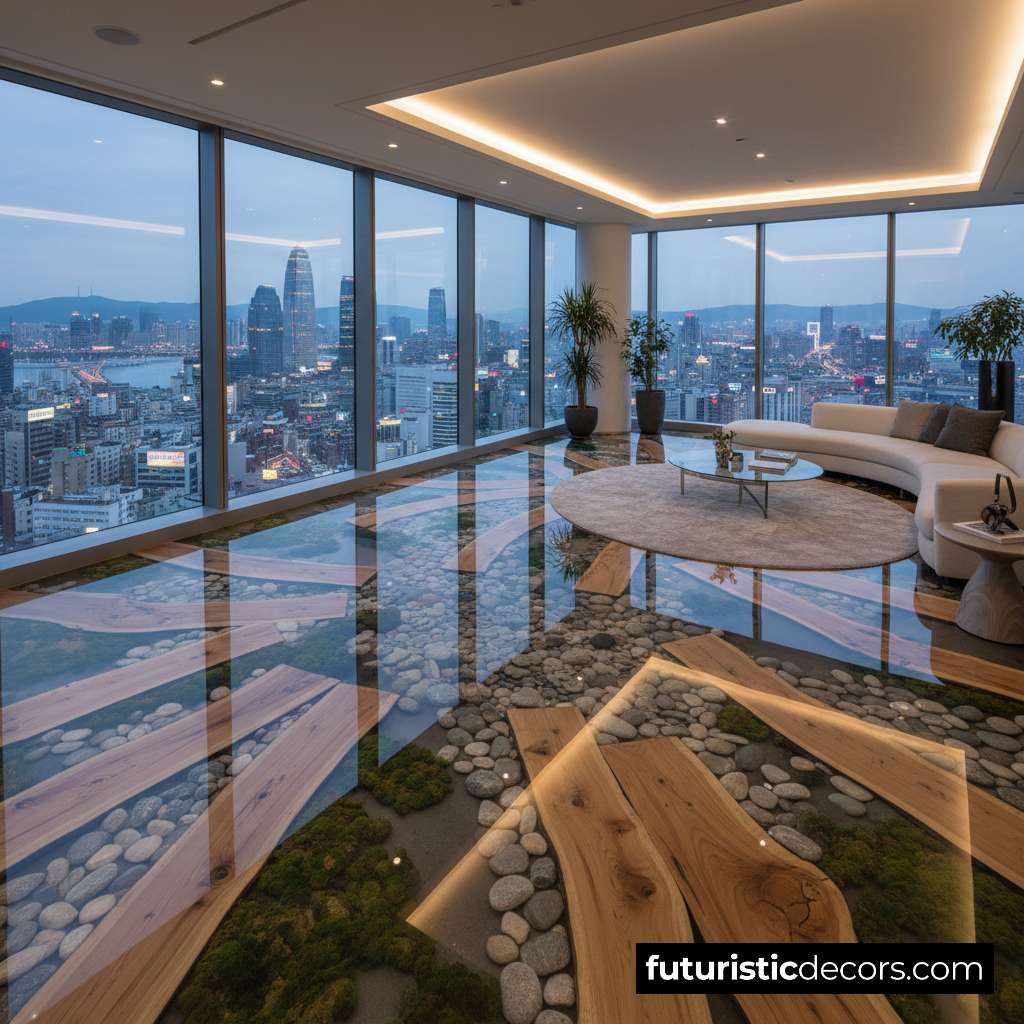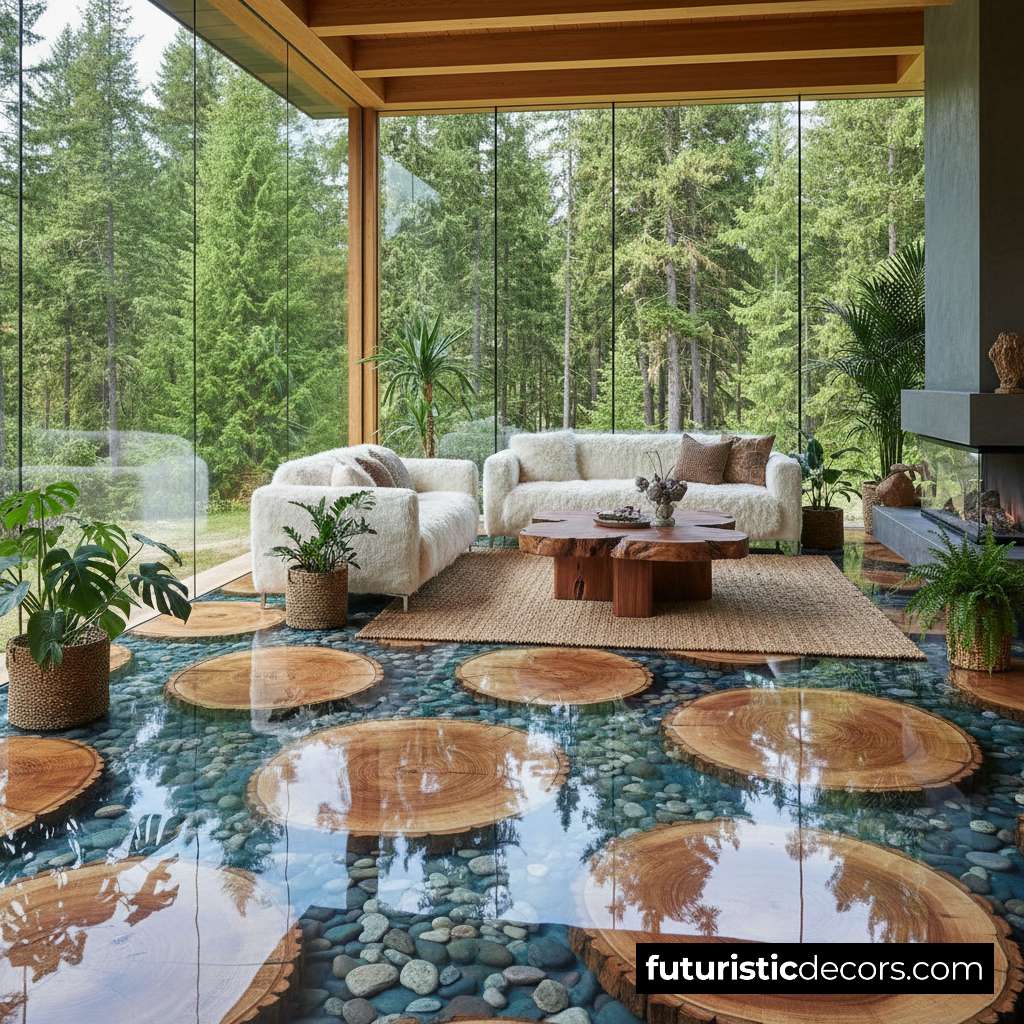When it comes to combining natural beauty with modern durability, few flooring options can rival Log End Epoxy Flooring. This distinctive surface — created by embedding log slices in a glossy, high-strength epoxy resin — instantly transforms any room into a warm, organic, yet ultra-sophisticated environment. But before diving into this luxurious flooring option, understanding its cost breakdown, budgeting strategies, and value over time is essential for homeowners and designers alike.
This comprehensive guide explores the real costs behind Log End Epoxy Flooring, how to plan your budget effectively, and the hidden factors that influence your investment.
What Is Log End Epoxy Flooring?
Log End Epoxy Flooring is a stunning blend of natural wood and epoxy resin, combining aesthetics with performance. Each “log end” — cross-sections of small tree trunks or large branches — reveals intricate growth rings, giving every floor a one-of-a-kind mosaic pattern. These wood slices are carefully arranged on a base layer, sealed, and then coated with multiple layers of crystal-clear epoxy resin.
The result? A smooth, glass-like finish that highlights the wood’s natural tones while providing water resistance, impact durability, and easy maintenance.
Why It’s Popular?
- Natural artistry: Each piece of wood is unique.
- Durability: Epoxy resin protects against moisture, stains, and abrasion.
- Customization: Choose log species, size, and epoxy color (clear, black, metallic, etc.).
- Sustainability: Often crafted from reclaimed wood, reducing environmental impact.
This fusion of rustic charm and modern innovation makes Log End Epoxy Flooring a favorite for kitchens, dining rooms, lodges, restaurants, and nature-inspired commercial interiors.

Cost Breakdown of Log End Epoxy Flooring
Understanding the total cost of Log End Epoxy Flooring involves more than just material prices. It depends on several key factors — from design complexity to epoxy type and professional labor. Let’s look at an average cost range and how each component adds up.
Average Price Range
- DIY Installation: $10 – $25 per sq. ft.
- Professional Installation: $30 – $75 per sq. ft.
- High-End Custom Projects: $80 – $120+ per sq. ft.
This means a 200 sq. ft. kitchen could range between $6,000 and $15,000, depending on design choices and materials.
Cost Breakdown by Component
| Component | Average Cost (per sq. ft.) | Description |
|---|---|---|
| Log Slices (Wood Material) | $3 – $10 | Costs depend on wood species (oak, pine, walnut, etc.), drying quality, and uniformity. |
| Epoxy Resin | $5 – $15 | Includes base coat, flood coat, and top coat for a clear, durable surface. |
| Surface Preparation | $2 – $5 | Involves cleaning, leveling, moisture testing, and sealing concrete subfloor. |
| Labor / Installation | $10 – $30 | Skilled artisans are required to place logs, pour epoxy, and ensure a bubble-free, even finish. |
| Design Customization | $5 – $20 | Metallic pigments, colored resin, or artistic layouts can increase costs. |
| Finishing & Sealing | $3 – $8 | Polishing, buffing, and adding UV-resistant topcoats for long-lasting shine. |
Additional Cost Factors
- Wood Type & Source: Reclaimed hardwoods or rare species add premium costs.
- Epoxy Grade: UV-stable or marine-grade epoxy is pricier but lasts longer.
- Installation Environment: Uneven subfloors, moisture issues, or basement setups require extra prep.
- Geographic Location: Labor rates vary — urban areas tend to cost more.
- Room Size & Layout: Smaller rooms may have higher per-square-foot costs due to setup time and waste.
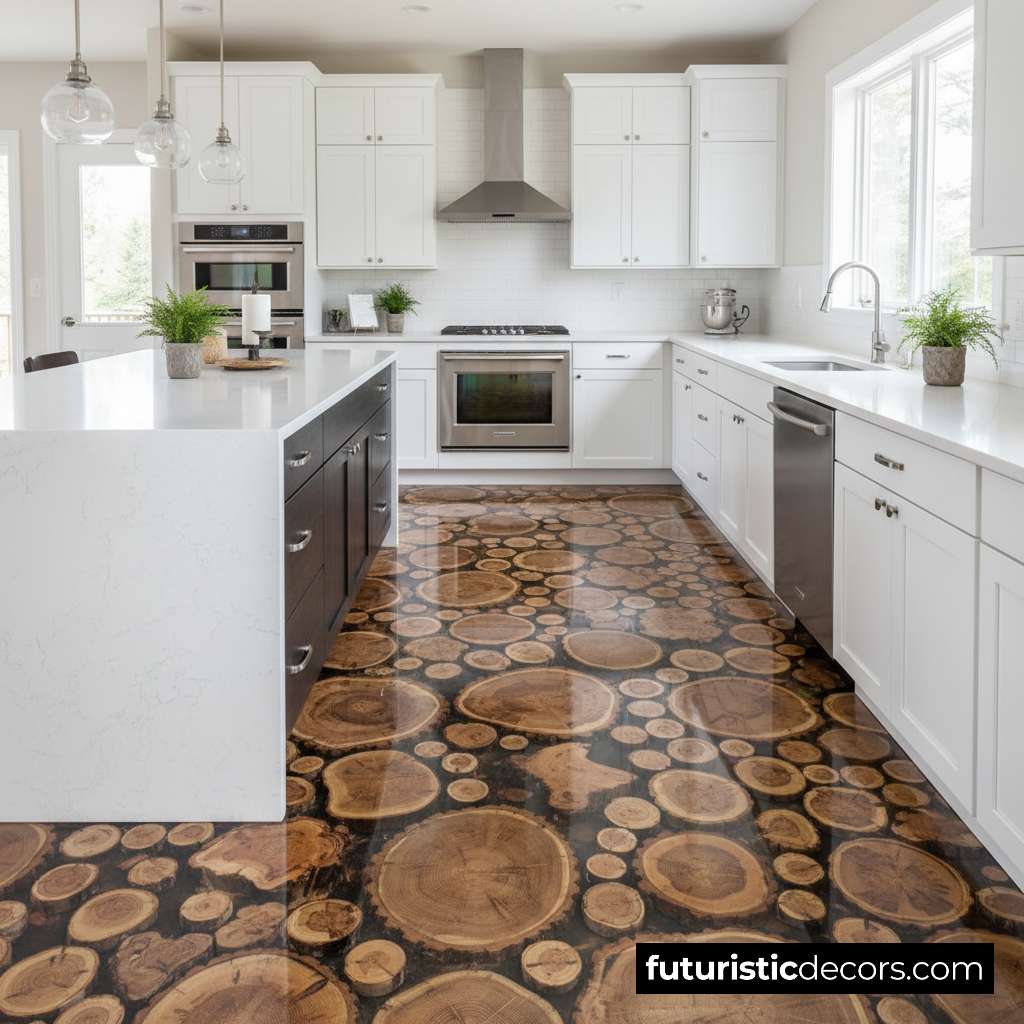
DIY vs. Professional Installation: Which Saves More?
While DIY installation seems tempting, Log End Epoxy Flooring demands skill, precision, and patience. Here’s how the two approaches compare:
DIY Installation
Pros:
- Saves labor costs.
- Offers creative freedom.
- Great for small accent areas or tabletops.
Cons:
- Requires specialized tools.
- Mistakes can cause uneven resin layers, trapped bubbles, or wood warping.
- No professional warranty.
Estimated DIY Cost: $10–$25 per sq. ft.
Skill Level: Advanced DIY or woodworking experience required.
Professional Installation
Pros:
- Perfect leveling and bubble-free resin application.
- Professional-grade sealing and UV protection.
- Time-efficient and long-lasting results.
Cons:
- Higher upfront cost.
- Scheduling and contractor availability may vary.
Estimated Professional Cost: $30–$75+ per sq. ft.
Ideal For: Full-room installations, commercial spaces, and luxury interiors.
Budgeting Tips for Log End Epoxy Flooring
Investing in Log End Epoxy Flooring doesn’t have to break the bank. With strategic planning, you can achieve a high-end look while staying within budget.
Tip 1: Plan Your Layout and Coverage
Define where you want epoxy flooring — full rooms, feature areas, or walkways. Smaller installations, such as kitchen islands or entryways, can create stunning focal points without the full cost of large spaces.
Tip 2: Choose Local or Reclaimed Wood
Sourcing log slices locally or using reclaimed materials significantly reduces shipping costs and supports sustainable design practices.
Tip 3: Simplify Your Epoxy Layers
While multi-layer designs with metallic pigments look amazing, a simple clear epoxy over natural wood slices can still deliver breathtaking results at lower cost.
Tip 4: Compare Epoxy Brands
Not all epoxy resins are equal. High-quality, UV-resistant epoxy costs more upfront but prevents yellowing and extends lifespan — saving money in the long term.
Tip 5: Bundle Services
If you’re remodeling other areas, negotiate bulk discounts with contractors who specialize in epoxy installations. Combining jobs can cut overall costs.
Tip 6: Maintain Regular Cleaning
Budget for proper cleaning tools and products to maintain the shine and prevent scratches. A microfiber mop and pH-neutral cleaner work best.
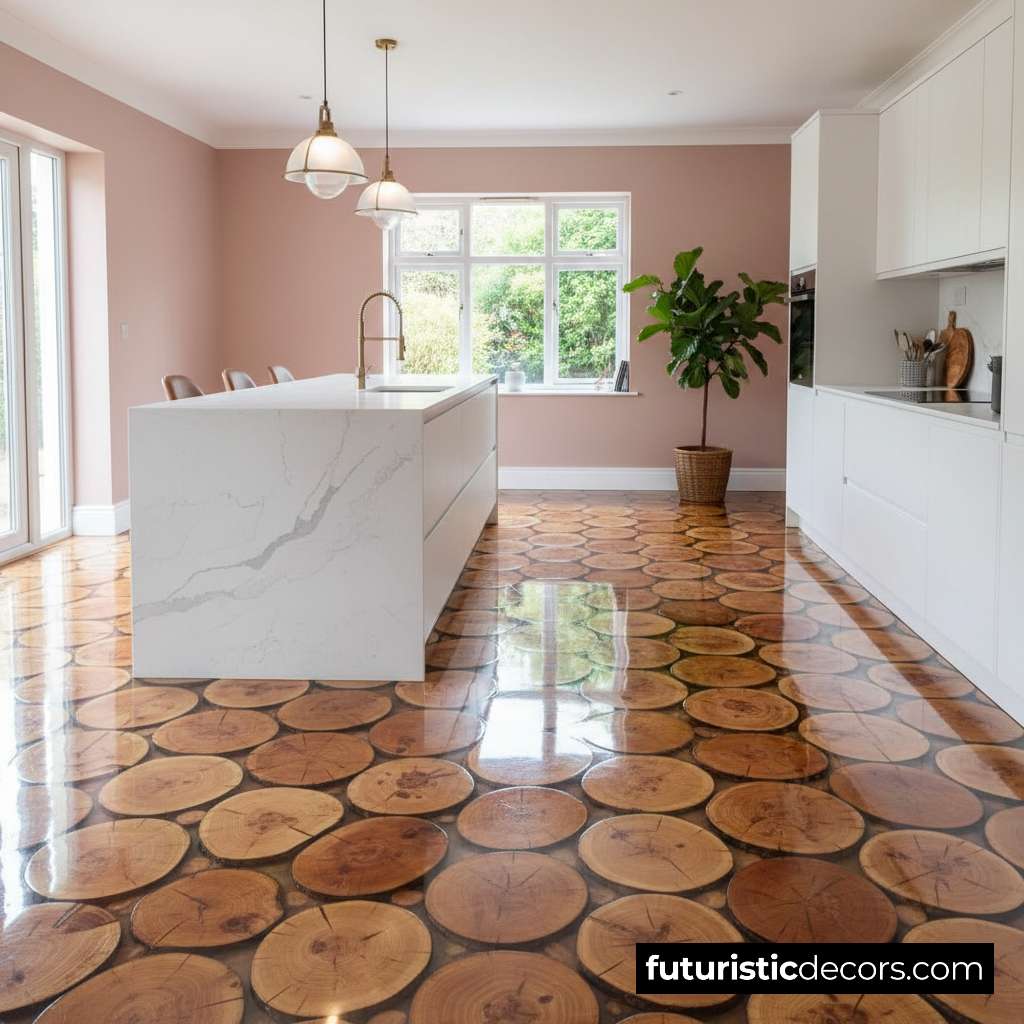
Long-Term Value: Why It’s Worth the Investment
Although Log End Epoxy Flooring can cost more than traditional wood or tile flooring, it offers unmatched longevity, visual appeal, and resale potential.
Durability and Lifespan
With proper care, epoxy floors can last 15–25 years or longer. The thick resin layer protects the wood from water damage, fading, and impact — ideal for high-traffic areas.
Low Maintenance
Unlike natural wood floors that require frequent refinishing, epoxy surfaces only need routine cleaning and occasional resealing every 5–7 years.
Property Value Boost
Homes and businesses featuring unique flooring like this often attract buyers seeking originality. A beautifully executed Log End Epoxy Flooring can increase aesthetic and resale value by adding a luxury touch few properties have.
Sample Budget: 200 sq. ft. Kitchen
| Expense Category | Low-End Estimate | High-End Estimate |
|---|---|---|
| Log Slices | $600 | $1,800 |
| Epoxy Resin | $1,000 | $2,800 |
| Surface Preparation | $400 | $1,000 |
| Installation Labor | $2,000 | $5,000 |
| Design Customization | $600 | $1,800 |
| Finishing & Sealing | $400 | $1,000 |
| Total Estimated Cost | $5,000 | $13,400 |
Common Cost Mistakes to Avoid
1. Ignoring Moisture Barriers
Failing to check for subfloor moisture can ruin epoxy adhesion. Always include vapor barriers in your prep cost.
2. Choosing Low-Grade Epoxy
Cheap resins may yellow or crack over time. Invest in UV-stable epoxy for kitchens and sunlit spaces.
3. Skipping Professional Finishing
A high-gloss polish and UV-resistant topcoat are worth every dollar for appearance and protection.
4. Underestimating Cure Time
Epoxy curing can take several days to a week. Factor in downtime, especially for business or rental properties.
5. Poor Surface Prep
The smoother the surface, the clearer the final result. Never skip grinding, vacuuming, and priming steps before pouring.
Maintenance & Future Budget Considerations
A key part of long-term budgeting is knowing your future maintenance costs. Log End Epoxy Flooring is fairly low-maintenance, but still requires basic care to preserve its elegance.
Routine Maintenance Costs
- Cleaning Supplies: $50 – $100/year
- Professional Buff & Reseal (Every 5–7 years): $2–$4 per sq. ft.
- Minor Scratch Repairs: $100 – $300 (depending on area size)
Simple Maintenance Tips
- Use soft pads under furniture.
- Sweep or vacuum regularly to avoid grit scratching the epoxy.
- Avoid harsh chemicals — stick to mild detergents.
- Reapply a UV-resistant sealant when gloss begins to fade.
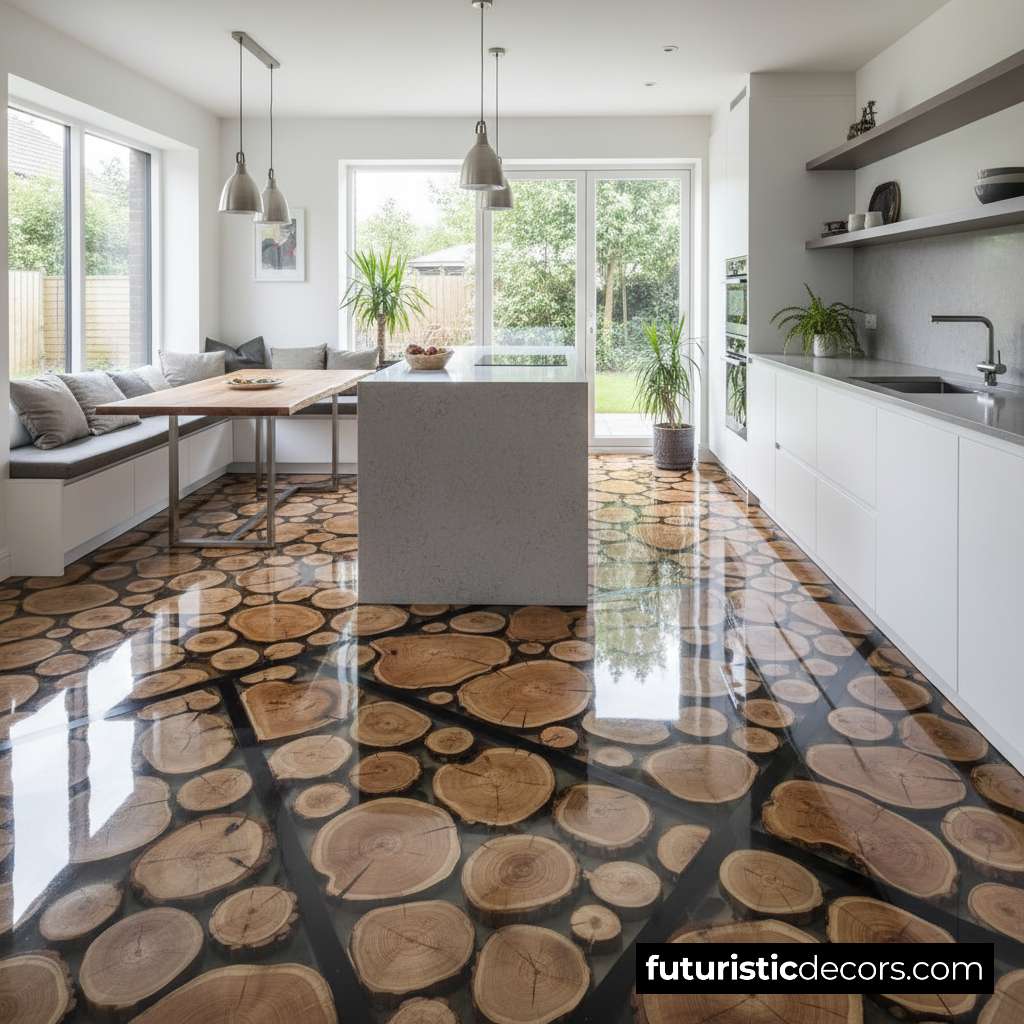
Comparing Log End Epoxy Flooring with Other Flooring Types
| Flooring Type | Average Cost (per sq. ft.) | Lifespan | Maintenance | Aesthetic Appeal |
|---|---|---|---|---|
| Log End Epoxy Flooring | $30–$75+ | 20+ years | Low | Unique, Artistic |
| Hardwood Flooring | $10–$25 | 10–15 years | Medium | Classic |
| Tile Flooring | $8–$20 | 15–20 years | Low | Conventional |
| Vinyl Flooring | $5–$10 | 10–15 years | Low | Modern but Synthetic |
| Polished Concrete | $7–$15 | 20+ years | Low | Industrial Look |
While epoxy flooring is more expensive upfront, its longevity, artistry, and customization make it an ideal investment for those seeking individuality and sophistication.
Refer to buy similar products: Click here
FAQs About Log End Epoxy Flooring
1. What is the average cost of Log End Epoxy Flooring per square foot?
The average cost of Log End Epoxy Flooring ranges from $30 to $75 per square foot for professional installation. High-end custom projects with rare wood species or artistic resin designs can go beyond $100 per square foot. DIY installations may cost between $10 and $25 per square foot, depending on materials and tools used.
2. What factors affect the cost of Log End Epoxy Flooring the most?
The main cost drivers include:
- Wood type (oak, walnut, pine, or reclaimed wood)
- Epoxy resin quality (UV-resistant or standard)
- Design complexity (clear vs. tinted resin, log pattern layout)
- Labor skill and region-based pricing
- Surface preparation needs (leveling, moisture sealing)
Each of these factors directly impacts the final cost per square foot and total project price.
3. Can I install Log End Epoxy Flooring myself?
Yes, but it’s recommended only for experienced DIYers. Creating a flawless Log End Epoxy Flooring surface requires:
- A perfectly level base
- Correct mixing and pouring of epoxy resin
- Bubble removal and proper curing
Mistakes can be costly to fix, so for full-room installations, professional help is strongly advised.
4. How long does it take to install Log End Epoxy Flooring?
A typical project can take 5 to 10 days, depending on room size and design complexity.
- Day 1–2: Subfloor prep and wood placement
- Day 3–4: First epoxy pour and curing
- Day 5–7: Second or third coat and polishing
Full curing may take up to a week before heavy furniture or foot traffic is allowed.
5. What’s the lifespan of Log End Epoxy Flooring?
With proper maintenance, Log End Epoxy Flooring can last 15–25 years or more. Its thick resin layer protects the wood from moisture, stains, and scratches, ensuring long-term beauty and durability.
6. Does epoxy flooring turn yellow over time?
Cheaper epoxy resins may yellow or cloud due to UV exposure. Always choose UV-stable or marine-grade epoxy for kitchens or rooms with natural sunlight. This ensures your flooring maintains its clarity and shine for many years.
7. Is Log End Epoxy Flooring waterproof?
Yes, once sealed properly, epoxy is 100% waterproof. This makes it ideal for kitchens, dining areas, and basements — places where spills or moisture are common. However, ensure the subfloor beneath is also moisture-proof to prevent long-term damage.
Conclusion: “Log End Epoxy Flooring”
Installing Log End Epoxy Flooring is more than a design decision — it’s an investment in artistry, functionality, and long-lasting elegance. While the upfront cost can be significant, understanding each expense, setting a realistic budget, and choosing experienced professionals can make the journey smooth and rewarding.
From sustainable log slices to high-performance resin, this flooring type blends natural warmth with modern resilience, ensuring that your interior stands out for decades. Whether you’re enhancing a kitchen, creating a boutique showroom, or designing a cozy cabin, Log End Epoxy Flooring delivers the perfect balance between nature and innovation.


